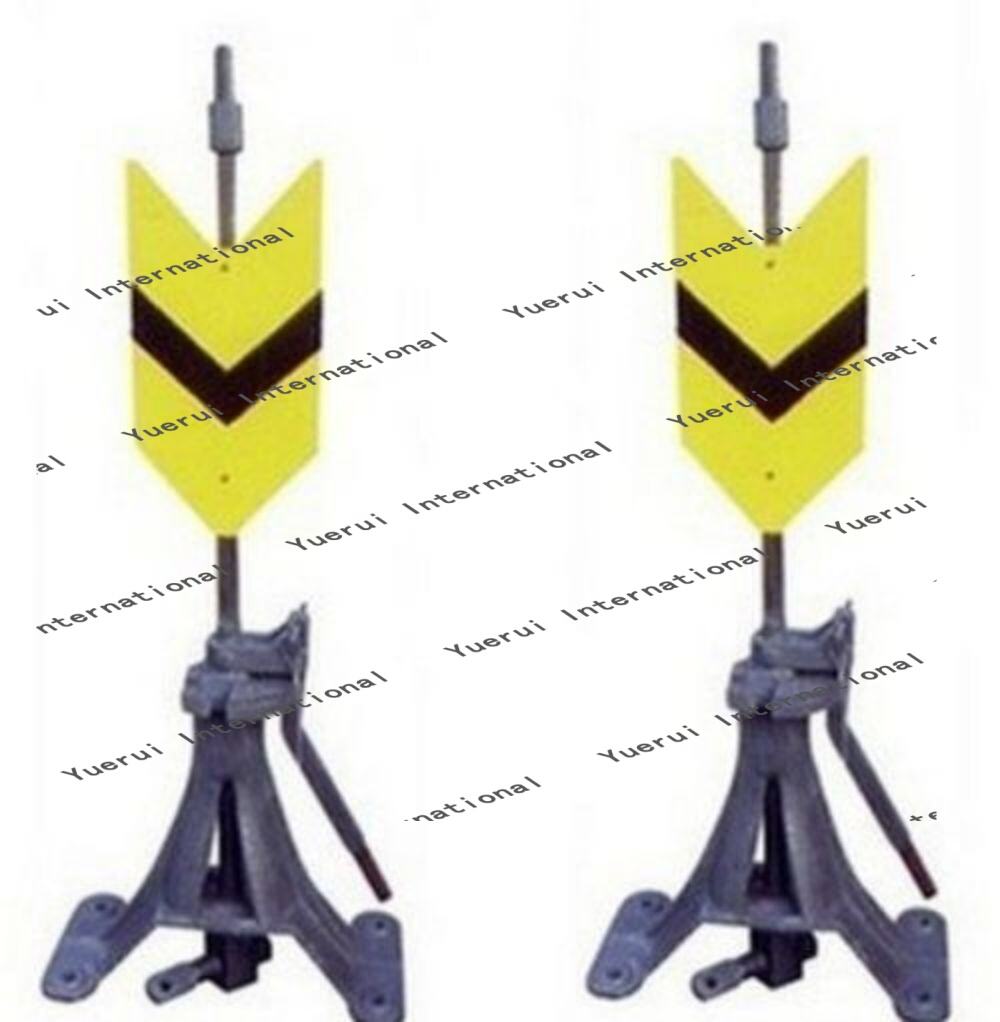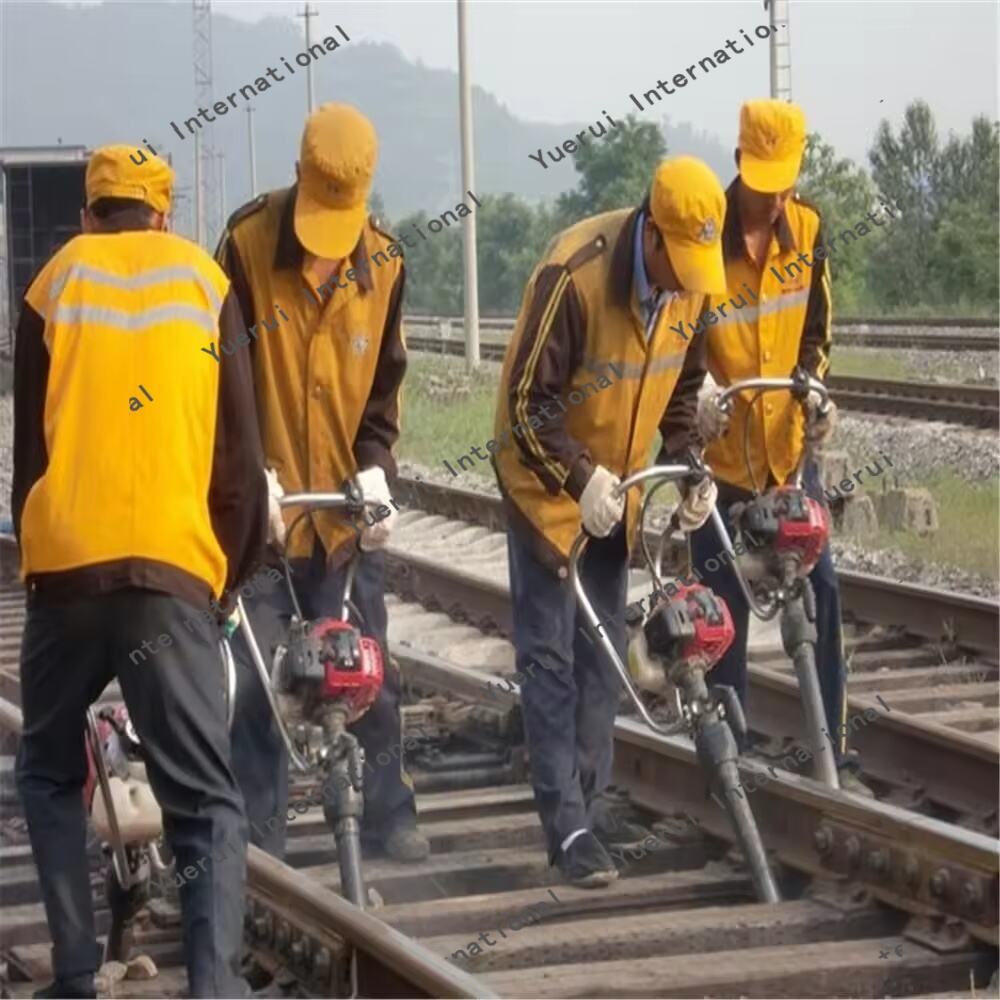The Critical Role of Railway Equipment in Modern Infrastructure Development
Modern infrastructure development stands as a testament to human engineering capabilities, with railway systems forming the backbone of transportation networks worldwide. Railway equipment plays an indispensable role in shaping these massive infrastructure projects, enabling the seamless movement of people and goods across vast distances. From laying new tracks to maintaining existing lines, the success of these projects hinges on the quality and reliability of the railway equipment employed.
The relationship between infrastructure projects and railway equipment has evolved significantly over the past century. Today's sophisticated railway systems require precision-engineered components and cutting-edge technology to ensure safety, efficiency, and longevity. As urbanization continues to accelerate globally, the demand for robust railway infrastructure has never been more pressing, making reliable railway equipment an absolute necessity.
Core Components of Railway Infrastructure Systems
Track and Signal Equipment Essentials
The foundation of any railway system lies in its track and signaling infrastructure. Modern railway equipment includes specialized rail fastening systems, switch points, and sophisticated signaling mechanisms that ensure trains operate safely and efficiently. Track components must withstand enormous stress while maintaining precise alignment, making the quality of railway equipment paramount to system reliability.
Advanced signaling systems incorporate state-of-the-art railway equipment such as automatic train protection (ATP) devices, track circuits, and electronic interlocking systems. These components work in concert to prevent collisions, optimize traffic flow, and maximize track capacity while maintaining the highest safety standards.
Rolling Stock and Maintenance Equipment
The rolling stock represents another crucial category of railway equipment, encompassing locomotives, passenger cars, and freight wagons. These vehicles must meet stringent performance and safety requirements while delivering optimal operational efficiency. Modern rolling stock incorporates advanced technologies for improved acceleration, braking, and energy efficiency.
Maintenance equipment forms an equally vital component, including track inspection vehicles, ballast cleaning machines, and rail grinding equipment. These specialized tools ensure the longevity of railway infrastructure and prevent costly service disruptions. Regular maintenance using appropriate railway equipment helps identify and address potential issues before they escalate into major problems.
Technology Integration in Modern Railway Systems
Digital Control and Monitoring Solutions
The integration of digital technologies has revolutionized railway equipment capabilities. Modern control systems utilize sophisticated sensors, data analytics, and artificial intelligence to monitor track conditions, predict maintenance needs, and optimize system performance. This technological evolution has significantly enhanced the reliability and efficiency of railway operations.
Smart railway equipment now includes automated inspection systems, real-time monitoring devices, and predictive maintenance tools. These innovations enable infrastructure managers to make data-driven decisions, reducing downtime and maximizing asset utilization while ensuring passenger safety.
Communication and Security Systems
Advanced communication infrastructure represents a critical component of modern railway equipment. These systems facilitate seamless information exchange between trains, control centers, and maintenance crews. Reliable communication networks ensure prompt response to operational challenges and emergency situations.
Security-related railway equipment has also evolved significantly, incorporating surveillance systems, access control mechanisms, and emergency response tools. These components work together to protect infrastructure assets and ensure passenger safety in an increasingly complex operating environment.

Environmental and Economic Implications
Sustainability Considerations
Modern railway equipment increasingly focuses on environmental sustainability. Manufacturers are developing energy-efficient components, implementing regenerative braking systems, and utilizing eco-friendly materials. These innovations help reduce the carbon footprint of railway operations while maintaining high performance standards.
The adoption of sustainable railway equipment also supports broader environmental goals, as rail transport represents one of the most environmentally friendly modes of transportation. Infrastructure projects that prioritize sustainable railway equipment contribute significantly to reducing transportation-related emissions.
Economic Benefits and Return on Investment
Investing in quality railway equipment yields substantial economic benefits for infrastructure projects. While initial costs may be higher, reliable equipment reduces maintenance requirements, extends asset lifespan, and minimizes service disruptions. These factors contribute to improved operational efficiency and better return on investment.
The economic impact extends beyond direct operational benefits, as reliable railway systems attract increased ridership and freight transport, generating additional revenue streams. Furthermore, well-maintained railway equipment helps prevent costly accidents and reduces insurance premiums.
Future Trends and Innovations
Emerging Technologies
The future of railway equipment looks increasingly automated and interconnected. Developments in autonomous systems, Internet of Things (IoT) integration, and advanced materials science are shaping the next generation of railway infrastructure components. These innovations promise enhanced safety, efficiency, and reliability.
Research continues into revolutionary railway equipment concepts, including magnetic levitation technology, hydrogen-powered locomotives, and smart infrastructure systems that can self-diagnose and adapt to changing conditions. These advancements will further transform the capabilities of railway systems.
Infrastructure Adaptation and Modernization
As existing railway infrastructure ages, modernization becomes increasingly critical. New railway equipment must seamlessly integrate with legacy systems while providing enhanced functionality. This challenge drives innovation in backward-compatible solutions and modular upgrade paths.
The modernization process also considers future expansion requirements, with railway equipment designed to accommodate increased capacity and higher operating speeds. This forward-thinking approach ensures infrastructure investments remain valuable for decades to come.
Frequently Asked Questions
How does railway equipment impact infrastructure project timelines?
Railway equipment significantly influences project timelines through its availability, installation requirements, and testing procedures. Quality equipment reduces delays by minimizing failures and maintenance needs, while advanced installation tools can accelerate construction processes. Proper planning and selection of railway equipment can help projects stay on schedule and within budget.
What are the key factors in selecting railway equipment for large projects?
The selection of railway equipment depends on multiple factors, including project scope, environmental conditions, maintenance requirements, and long-term operational goals. Other considerations include compatibility with existing infrastructure, supplier reliability, and total lifecycle costs. Safety certifications and compliance with international standards also play crucial roles in equipment selection.
How does weather resistance affect railway equipment performance?
Weather resistance is crucial for railway equipment durability and reliability. Equipment must withstand various environmental conditions, from extreme temperatures to heavy precipitation and corrosive elements. High-quality railway equipment incorporates weather-resistant materials and designs that ensure consistent performance across all seasons while minimizing maintenance requirements.

